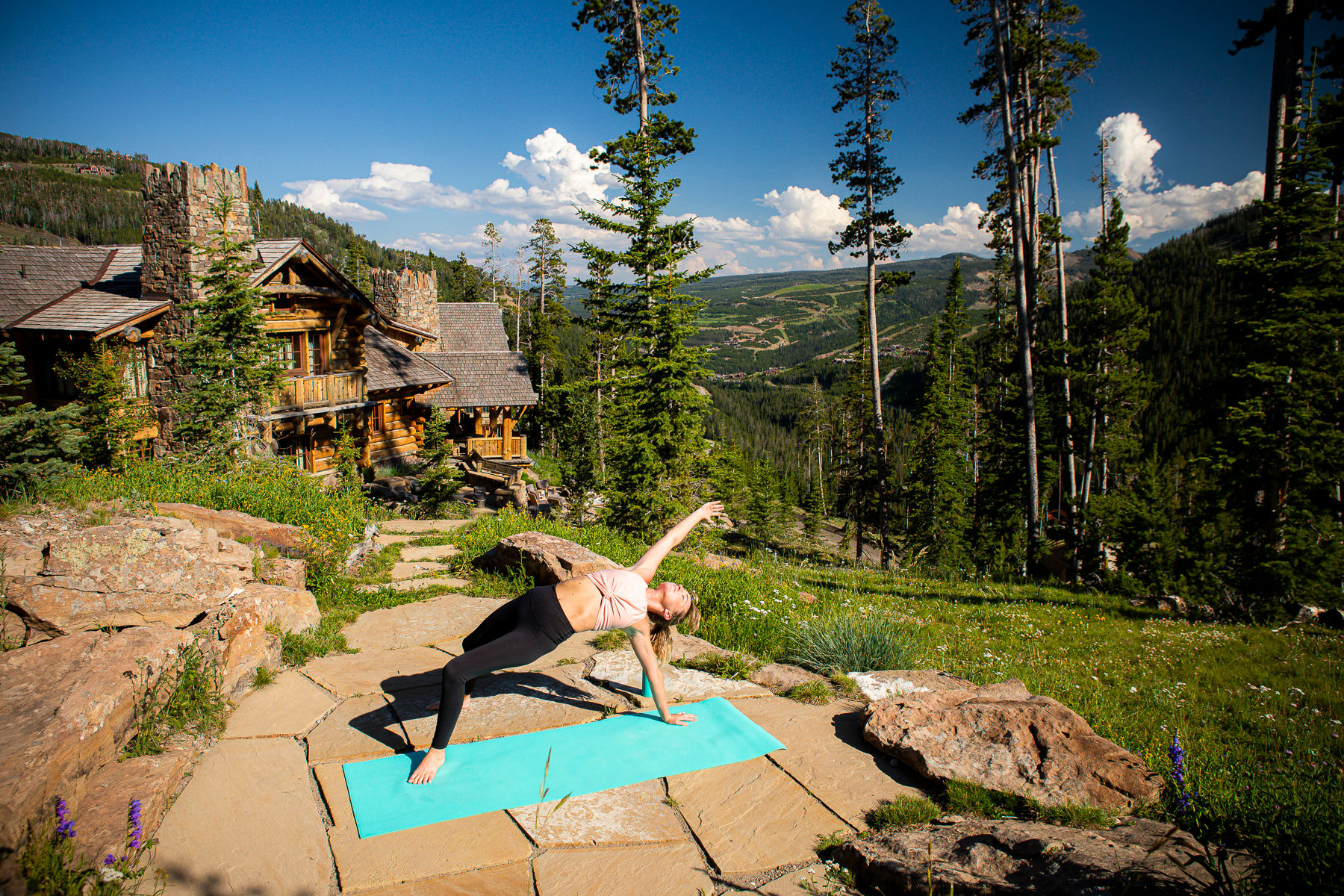Creating a peaceful yoga space by a pond merges the tranquility of nature with wellness practices. Integrating an outdoor yoga deck into waterfront properties enhances both the aesthetics of the area and the quality of yoga practice. This guide offers insights for landscape designers, yoga enthusiasts, and homeowners looking to develop a serene yoga retreat beside a pond. The focus is on essential design elements, sustainable practices, functionality, safety measures, maintenance considerations, and the cultural significance of practicing yoga near water. By addressing specific needs and leveraging the calming presence of water, individuals can cultivate a tranquil environment that fosters mindfulness and connection to nature.
Transforming Waterfront Properties into Yoga Sanctuaries
Integrating a yoga deck into an existing pond space can dramatically improve both its functionality and beauty. The initial step involves identifying the best location for the deck. An ideal site would provide a clear view of the pond while allowing for natural shade and protection from wind, which enhances comfort during practice.
Maintaining the pond’s beauty while ensuring the deck serves its intended function is critical. Thoughtful landscaping can complement the existing environment, such as incorporating native plants around the pond. This not only enhances the area visually but also supports local wildlife.
It is essential to assess how the yoga deck will impact the environment. Using permeable materials for the deck allows rainwater to filter naturally into the ground, contributing to the pond’s water quality. Incorporating a soothing water feature can also elevate the ambiance, helping practitioners immerse themselves in nature and minimize distractions from external noises.
Beautiful transformation of a waterfront property featuring a yoga deck that overlooks a serene pond (Source: YouTube)
Choosing the Perfect Yoga Deck Materials for Safety and Aesthetics
Selecting appropriate materials for the yoga deck is crucial for both safety and longevity. Non-slip surfaces are essential to prevent accidents, particularly because wet conditions can increase the risk of slips during practice. Natural materials such as hardwood, bamboo, or composite decking provide stability and blend well with the outdoor environment.
Considering environmentally friendly options also plays a significant role. Recycled plastic lumber and FSC-certified wood are excellent sustainable choices. These materials not only offer durability but also help reduce the ecological footprint of the project, promoting responsible landscaping practices.
The aesthetic aspect of material selection should not be overlooked. Color and texture should complement the natural surroundings to create a harmonious environment. This unified design encourages relaxation and mindfulness for those practicing yoga.

A chart comparing various decking materials based on durability, aesthetics, and safety (Source: Mataverde Decking)
Designing with Nature: Creating Multifunctional Wellness Areas
A multifunctional outdoor space can significantly enrich the yoga experience. This entails designing areas for various activities, such as meditation, wellness sessions, and relaxation. Comfortable seating options, such as benches and hammocks, should be included in the design, facilitating the transition between activities.
Incorporating shade features, like pergolas or strategically placed trees, provides comfort in warmer weather. These elements enhance both functionality and aesthetics. Additionally, sensory elements, like fragrant plants and soft lighting, further elevate the ambiance, creating a welcoming space for practitioners.
The layout must promote ease of movement while maintaining a tidy appearance. Arranging mats in a semi-circle facing the pond encourages a connection to nature and fosters community during group sessions.
.jpg)
An outdoor yoga space designed for multifunctionality, combining relaxation and meditation elements (Source: Architectural Digest)
Stability and Safety: Effective Anchoring Techniques for Your Yoga Deck
Safety is paramount when building a yoga deck beside a pond. Ensuring that the deck is securely anchored is essential, especially in areas where soil stability may be compromised due to moisture. Recommended practices for anchoring include using concrete footings or advanced anchoring systems that minimize movement and settling.
Incorporating non-slip surfaces and safety barriers also contributes to enhanced safety. Installing fencing around the deck, particularly in accessible areas for children, can help prevent accidents and reassure practitioners. Additionally, having safety equipment, such as life rings, readily available near the water is crucial.
Clear signage indicating safety protocols provides further protection for practitioners. Adequate lighting for evening sessions, achieved through strategically placed fixtures, is also essential to reduce the risk of slips and falls. Research indicates that well-lit areas can significantly lower the likelihood of accidents, improving the overall yoga experience.

Creative anchoring techniques for outdoor structures including yoga decks ensure stability and safety (Source: Shopify)
Maintaining the Beauty and Functionality of Your Pondside Yoga Space
Regular maintenance is vital for keeping the yoga space both visually appealing and functional year-round. This includes managing the water quality in the pond, which should be tested and treated routinely to inhibit algae growth. Natural maintenance options, such as utilizing beneficial bacteria, can foster ecological balance.
Maintaining the landscape is equally important, requiring routine trimming of vegetation and removal of debris. This practice prevents overgrowth that obstructs views or creates hazards. Adopting eco-friendly maintenance techniques, such as rainwater harvesting for irrigation and using native plants, can help lower maintenance costs while supporting local ecosystems.
Implementing natural pest control methods without resorting to chemicals that could harm the pond’s ecosystem further enhances safety and aesthetics. These maintenance practices contribute positively to the yoga experience while ensuring the health of the surrounding environment.

An example of a well-maintained pondside yoga space showing general upkeep and aesthetic care (Source: Blanchford Landscape)
Bringing Cultural Insights into Your Pondside Yoga Practice
Practicing yoga near water offers rich cultural and spiritual insights. Many cultures revere water as a sacred element associated with purification. Techniques such as purification rituals can enhance mindfulness before yoga practice, signifying a cleansing process for the mind and body.
Incorporating invocations to water deities into sessions creates a deep connection between practitioners and the spiritual aspects of water. These practices can enhance the overall experience, enabling individuals to interact with their environment meaningfully.
Moreover, aligning yoga practices with natural rhythms, such as timing sessions with specific lunar phases, adds another layer of mindfulness. Studies suggest that this bond with water can enhance psychological well-being, making waterfront yoga particularly beneficial.

A serene setting displaying various yoga poses being practiced by water, connecting cultural insights with nature (Source: YouTube)
Conclusion
Establishing tranquil yoga spaces at the pondside provides an opportunity to harmonize practice with the natural environment. By thoughtfully designing yoga decks, selecting sustainable materials, ensuring safety, and maintaining aesthetics, individuals can create an inviting environment conducive to mindfulness and relaxation. Additionally, integrating cultural and spiritual practices enriches the experience, fostering a profound connection to nature. Whether for personal use, group classes, or commercial wellness centers, developing a pondside yoga sanctuary not only enhances the yoga experience but also nurtures a greater appreciation for the natural world.

